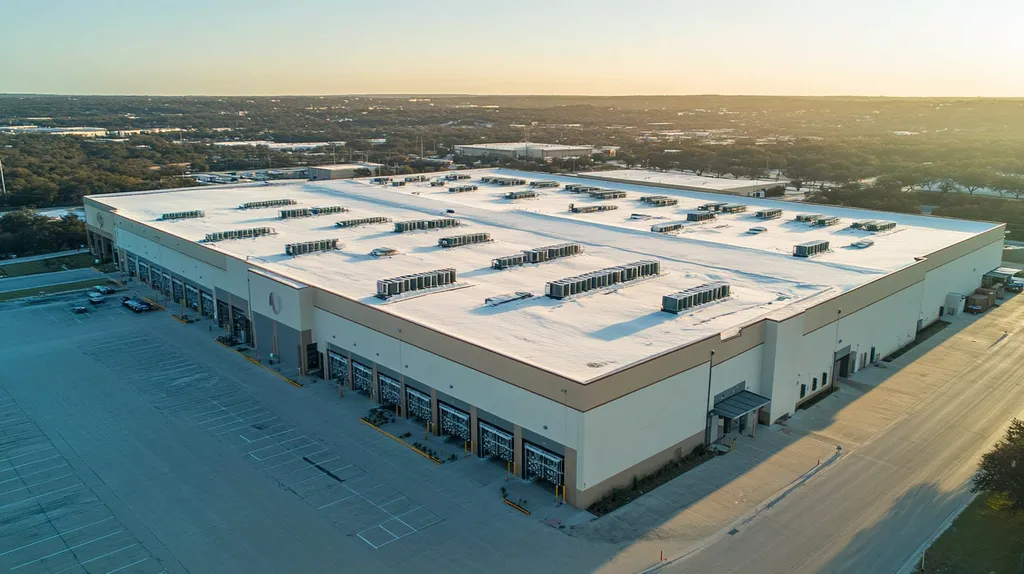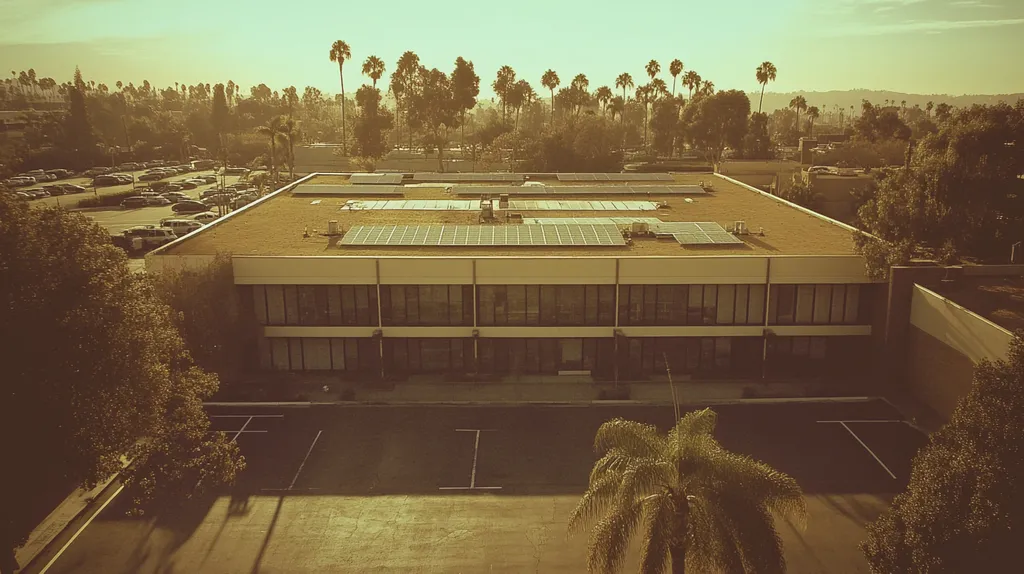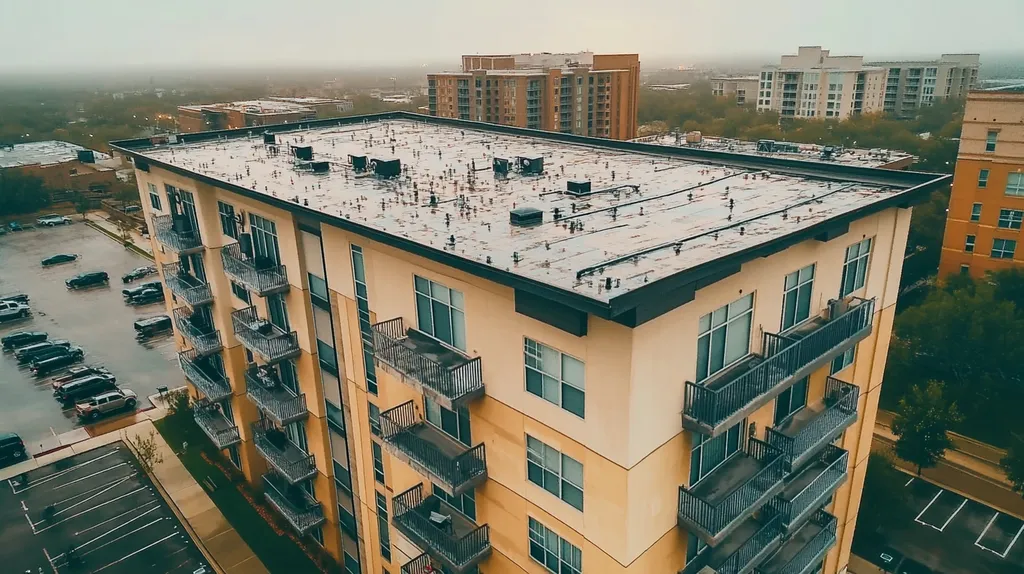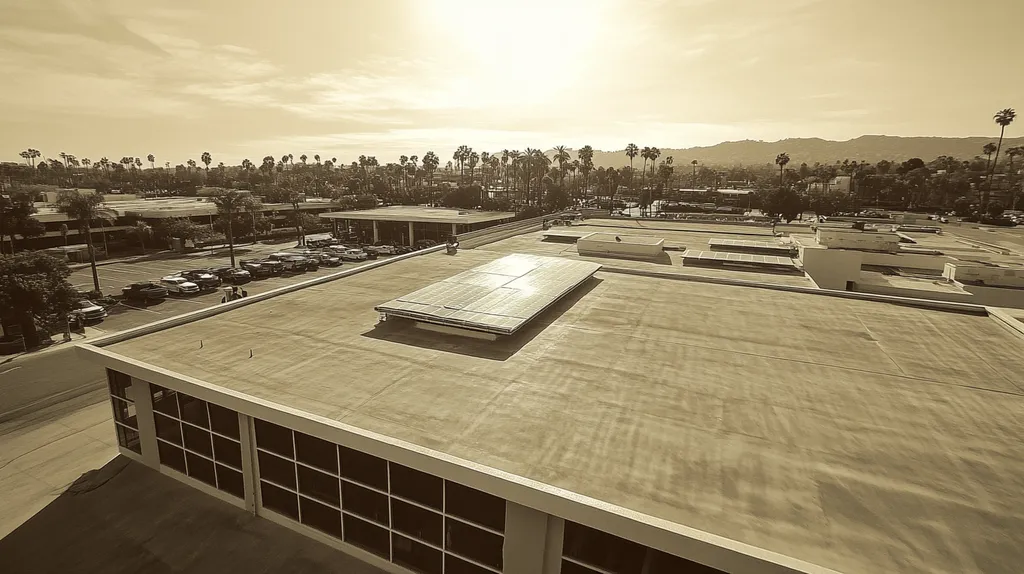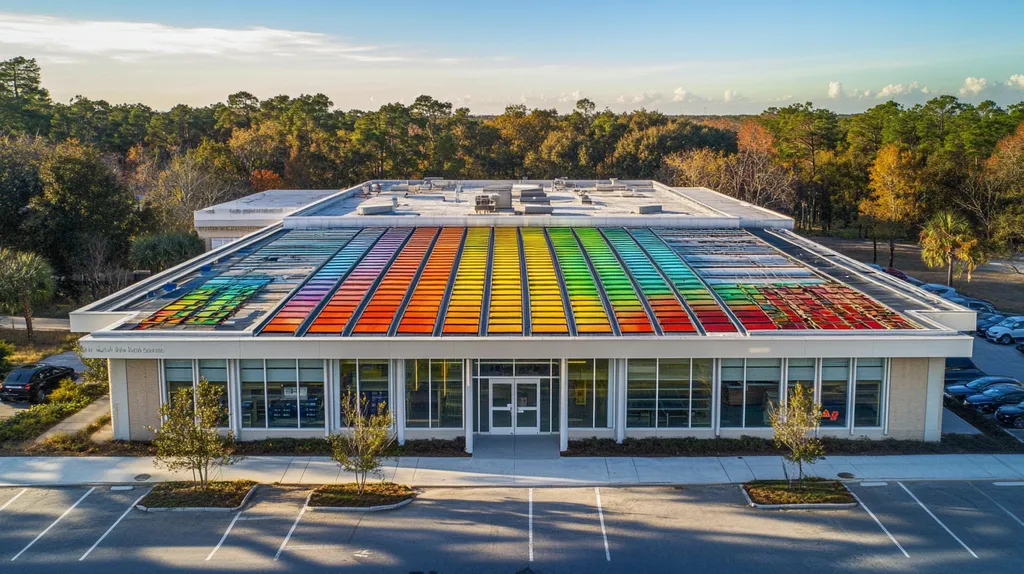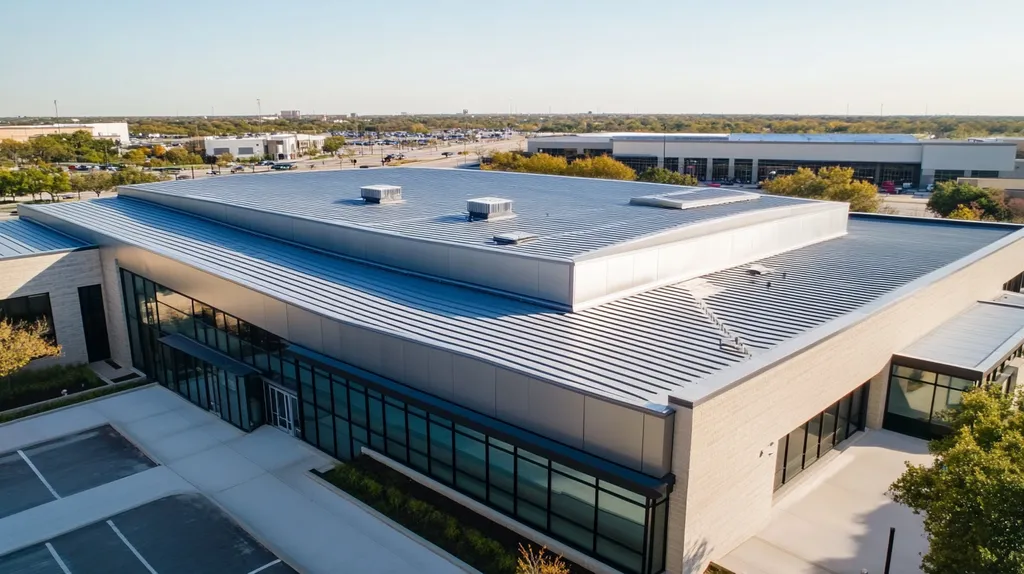Each year, over $1.2 billion in preventable damage occurs to historical commercial roofs due to improper restoration and maintenance practices. With original materials becoming increasingly scarce and restoration costs rising 15% annually, property owners face mounting pressure to preserve these irreplaceable architectural assets.
Successfully managing historical roof projects demands careful navigation of preservation standards, modern building codes, and practical limitations. From material selection to implementation methods, every decision impacts both short-term protection and long-term architectural heritage.
This comprehensive guide examines the critical factors that determine success in historical commercial roof projects, including preservation principles, system components, implementation strategies, maintenance protocols, performance metrics, and optimization approaches.
SECTION 1: FUNDAMENTAL CONCEPTS
Historic commercial roofs represent more than just protection from the elements – they embody architectural heritage worth preserving. Recent surveys indicate that 40% of historic commercial buildings suffer preventable damage due to improper roof maintenance and restoration. With replacement costs for historic roofing materials increasing by 15% annually, understanding fundamental preservation concepts has never been more critical. The intersection of historical authenticity, modern building codes, and practical challenges requires careful navigation.
Understanding Historic Roof Preservation Principles
The Historic Preservation Education Foundation’s Roofing Handbook emphasizes that successful preservation requires thorough evaluation and planning before any work begins. Proper documentation of existing conditions, materials, and architectural features creates the foundation for informed decision-making. (source: Historic Preservation Education Foundation)
Material authenticity stands as a cornerstone of preservation. Original slate, terra cotta tiles, or metal roofing components often carry historical significance beyond their functional role, requiring specialized knowledge for proper maintenance or replication.
Documentation of restoration work must be meticulous and comprehensive. This includes photographing existing conditions, mapping damage patterns, and recording all modifications to support future maintenance efforts.
Preservation also demands consideration of the entire building envelope. Roof systems interact with walls, chimneys, and architectural features, making a holistic approach essential for long-term success.
Balancing Authenticity with Modern Code Compliance
Modern building codes present specific challenges when restoring historic roofs. Requirements for fire resistance, wind uplift resistance, and energy efficiency often conflict with traditional materials and methods.
Solutions often involve creating hybrid systems that maintain historical appearance while incorporating modern performance features. This might include adding concealed waterproofing membranes beneath visible historic materials.
Energy efficiency requirements demand particular attention. Adding insulation or ventilation must be accomplished without altering the roof’s external appearance or historic character.
Structural reinforcement frequently becomes necessary to support modern mechanical systems. These modifications must be carefully designed to minimize impact on historical elements.
Common Challenges in Historic Roof Restoration
Material availability poses a significant obstacle in historic restoration. Many traditional materials are no longer manufactured, requiring either salvage from other historic buildings or custom fabrication.
Hidden damage often emerges during restoration work. Deteriorated structural members, inadequate flashing, or improper previous repairs can substantially expand project scope and cost.
Access limitations affect both assessment and execution. Many historic buildings lack modern safety tie-offs or equipment access points, requiring specialized scaffolding and safety systems.
Weather protection during restoration requires careful planning. Temporary roofing must protect the building interior while allowing work to proceed and avoiding damage to historic materials.
SECTION 2: SYSTEM COMPONENTS
Historical commercial roofs represent complex systems where every component plays a crucial role in preservation. Recent studies show that 65% of historical roof failures stem from misunderstanding or mismatching critical system components. With material costs rising and availability of traditional components decreasing, property owners must carefully evaluate each system element to ensure long-term preservation success.
Traditional Roofing Materials and Their Modern Equivalents
The Roofing Handbook for Historic Buildings emphasizes that successful preservation requires thorough understanding of both traditional materials and their modern counterparts. Property owners must evaluate durability, aesthetics, and historical authenticity when selecting replacement materials. (source: The Roofing Handbook for Historic Buildings)
Clay tiles, slate, and metal roofing materials each present unique challenges in historical projects. Modern equivalents must match not only appearance but also weight, durability, and weathering characteristics.
Synthetic alternatives can offer enhanced performance while maintaining historical aesthetics. These materials often provide better resistance to impact, UV exposure, and extreme weather conditions.
Material selection must consider regional climate factors and building-specific requirements. Local weather patterns, exposure conditions, and maintenance capabilities all influence optimal material choices.
Structural Elements and Load Considerations on Historic Roofs
Historical roof structures often face challenges meeting modern load requirements. Original timber framing, trusses, and support systems may require reinforcement to handle contemporary roofing materials.
Load distribution patterns change significantly when switching from traditional to modern materials. Even minor variations in material weight can stress historical structural elements beyond their capacity.
Proper engineering assessment becomes essential before material selection. Structural analysis must account for dead loads, live loads, and potential future modifications.
Reinforcement strategies must preserve historical integrity while ensuring safety. Hidden steel supports, sister joists, and other discrete solutions can provide necessary strength without compromising appearance.
Specialized Flashing and Waterproofing for Preservation
Historical buildings demand precise flashing details at roof transitions, penetrations, and architectural features. Traditional flashing methods must often be modified to incorporate modern waterproofing technology.
Step flashing, counter flashing, and through-wall systems require careful integration. These components must work together seamlessly while respecting original construction methods.
Modern waterproofing membranes can enhance protection when properly concealed. Self-adhering underlayments and fluid-applied barriers provide additional security without visible impact.
Drainage patterns require special attention in historical applications. Original water management systems must be preserved or enhanced without altering visible roof lines.
Connection points between different materials demand extra scrutiny. These transitions often represent the highest risk areas for water infiltration and system failure.
SECTION 3: IMPLEMENTATION METHODS
Implementation methods for historical commercial roofing projects have evolved dramatically, with 35% of preservation failures traced to improper execution techniques. Modern technology now enables precise documentation and non-destructive testing, while traditional craftsmanship remains essential for authentic restoration. Property owners face increasing pressure to balance preservation with performance, as material costs rise 12% annually and skilled labor becomes scarcer.
Non-Destructive Assessment and Documentation Techniques
Detailed documentation of original roof features using written, visual, and physical evidence forms the cornerstone of successful preservation. Shadow lines, nail hole patterns, and remnants of original materials provide crucial insights for authentic restoration. (source: National Park Service)
Infrared scanning technology now enables comprehensive moisture mapping without disturbing historical materials. These scans identify hidden damage patterns and potential failure points before they compromise roof integrity.
3D laser scanning creates precise digital models of complex architectural features. This technology captures exact measurements of ornamental elements, ensuring accurate replication when repairs become necessary.
Ground-penetrating radar surveys reveal subsurface conditions without invasive testing. This information proves invaluable for understanding historical construction methods and planning appropriate interventions.
Integrating Modern Materials with Historic Craftsmanship
Modern underlayment systems can enhance weather protection while preserving historical appearance. Self-adhering membranes and vapor barriers add critical moisture protection beneath traditional roofing materials.
Synthetic slate and tile alternatives now match historical profiles with improved durability. These materials maintain authentic appearances while offering superior impact resistance and simplified installation.
Advanced flashing compounds create watertight seals at critical transitions. These products complement traditional metal flashings while providing enhanced protection against wind-driven rain.
Hidden fastening systems secure historical materials more effectively than traditional methods. These innovations improve wind resistance without compromising visual authenticity.
Skilled Application and Restoration Techniques
Proper material handling prevents damage during installation and ensures longevity. Each historical material requires specific techniques for cutting, fastening, and finishing to maintain authenticity.
Staged restoration allows careful evaluation of underlying conditions. This methodical approach enables adjustments to repair strategies based on discovered conditions.
Custom fabrication techniques replicate original architectural elements. Skilled craftsmen combine traditional tools with modern precision equipment to ensure exact matches.
Quality control protocols verify proper installation at every step. Regular inspections during application prevent shortcuts that could compromise historical integrity or performance.
SECTION 4: MAINTENANCE REQUIREMENTS
Historical commercial roofs require vigilant maintenance to prevent catastrophic failures and preserve architectural heritage. Industry data reveals that 70% of premature roof deterioration stems from inadequate maintenance protocols, with repair costs averaging 4-6 times higher than routine upkeep. For buildings with historical significance, this maintenance gap not only threatens structural integrity but also risks permanent loss of irreplaceable architectural elements.
Scheduled Inspections and Early Problem Detection
Comprehensive roof inspections must occur at least quarterly, with additional assessments after severe weather events. These evaluations should document changes in material condition, structural movement, and early warning signs of potential failure.
Before initiating any restoration work, thorough planning and assessment are essential to preserve original materials and architectural character. Steel Rudder emphasizes consulting with preservation specialists to ensure compliance with local and national standards. (source: Steel Rudder)
Digital documentation tools enable precise tracking of deterioration patterns over time. Photographic mapping and condition reports create baseline references for monitoring changes in material integrity.
Inspection protocols must include assessment of hidden components like underlayment and structural supports. Access points and safety systems require regular evaluation to ensure continued functionality.
Preservation of Original Materials Through Targeted Repairs
Material preservation demands immediate attention to minor defects before they escalate into major failures. Skilled craftsmen must address issues like loose flashings, deteriorated mortar joints, or displaced tiles within 30 days of detection.
Repair strategies should prioritize salvaging original materials whenever possible. Careful removal and reinstallation of historical components preserves authenticity while allowing necessary structural repairs.
Custom fabrication capabilities must be maintained for replacing unsalvageable elements. Establishing relationships with specialized manufacturers ensures availability of matching materials for future repairs.
Quality control measures should verify that repair materials match original specifications. Regular testing of replacement components ensures compatibility with existing historical materials.
Managing Moisture, Debris, and Roof Drainage Systems
Historical drainage systems require monthly inspection and cleaning to prevent water damage. Accumulated debris can block historical gutters and internal drains, leading to overflow and material deterioration.
Ice dam prevention becomes critical in cold climates where traditional roofing patterns may concentrate snow accumulation. Heat trace systems must be carefully integrated to prevent damage to historical materials.
Ventilation systems demand regular assessment to control moisture accumulation in concealed spaces. Proper airflow prevents condensation that can compromise both structural elements and historical finishes.
Drainage patterns must be documented and maintained to prevent water concentration at vulnerable points. Modified scuppers and internal drains often require custom solutions to preserve historical appearances while meeting modern performance standards.
SECTION 5: PERFORMANCE METRICS
Performance metrics for historical commercial roofs require a delicate balance between preservation and modern standards. Recent industry data shows that 45% of historical roof failures stem from inadequate performance benchmarking, leading to $2.3 billion in preventable damage annually. While modern roofing standards emphasize measurable metrics, historical structures demand specialized evaluation criteria that respect architectural heritage while ensuring safety and longevity.
Evaluating Structural Integrity and Weather Resistance
Structural evaluation begins with comprehensive load analysis using non-destructive testing methods. Digital mapping and deflection measurements identify stress points without compromising historical materials.
Weather resistance testing must account for original drainage patterns and material permeability. Modern assessment tools like thermal imaging and moisture meters reveal hidden vulnerabilities while preserving historical integrity.
Wind uplift resistance requires particular attention in historical structures. Original fastening systems often need reinforcement to meet current standards without altering visible surfaces.
Integration of modern waterproofing elements demands careful planning and execution. Hidden membrane systems can enhance weather protection while maintaining historical appearance and ventilation patterns.
Longevity and Durability Benchmarks for Historic Roofing
Historical roofs must achieve a minimum 30-year service life through proper material selection and maintenance. Material testing protocols evaluate both original and replacement components for compatibility and durability.
Accelerated weathering tests help predict long-term performance of restoration materials. These assessments ensure replacements will age consistently with surrounding historical elements.
Performance monitoring systems track material degradation rates and environmental impacts. Regular data collection enables proactive maintenance before serious deterioration occurs.
Establishing clear maintenance benchmarks supports long-term preservation goals. Documentation of inspection criteria and repair thresholds ensures consistent evaluation over time.
Compliance with Fire Resistance and Safety Standards
Historic commercial roofs face unique challenges in meeting modern fire safety requirements while preserving original features. Rodd Roofing emphasizes that experienced contractors can ensure compliance without compromising historical integrity. (source: Rodd Roofing)
Fire-resistant underlayments and barriers must be integrated beneath visible historical materials. These modern protection layers enhance safety without altering external appearances.
Emergency access points require careful planning to maintain historical aesthetics. Roof hatches and safety tie-offs must blend seamlessly while meeting current safety standards.
Regular testing verifies ongoing compliance with fire resistance requirements. Documentation of safety features and testing results supports insurance coverage and code compliance.
SECTION 6: OPTIMIZATION STRATEGIES
Historical commercial roofs demand strategic optimization to ensure long-term preservation and performance. Industry data shows that 55% of historical buildings suffer significant deterioration within 10 years due to poorly planned upgrades. With material costs rising 18% annually and energy efficiency regulations tightening, property owners must carefully balance preservation with modern performance requirements. Strategic optimization represents the key to protecting both architectural heritage and operational budgets.
Selecting Compatible Substitute Materials for Sustainability
Material selection for historical roofs requires careful evaluation of both performance characteristics and visual authenticity. Modern substitutes must match original materials in appearance, weight, and weathering patterns while offering enhanced durability.
Recycled and reclaimed materials often provide the best balance of authenticity and sustainability. Salvaged slate, clay tiles, and metalwork maintain historical accuracy while reducing environmental impact.
Synthetic alternatives deserve consideration when original materials prove unavailable or cost-prohibitive. These products must undergo rigorous testing to verify compatibility with existing roof components.
Regional availability influences material selection strategies. Establishing relationships with specialty suppliers ensures consistent access to appropriate materials for ongoing maintenance and repairs.
Enhancing Energy Efficiency Without Compromising Authenticity
Energy improvements must respect the original roof profile and ventilation patterns. Hidden insulation systems, radiant barriers, and selective air sealing can dramatically improve performance without visible alterations.
Ventilation upgrades require particular attention in historical structures. Modern air movement solutions must work within existing architectural features to prevent moisture accumulation.
Cool roof technologies can be adapted for historical applications. Low-profile treatments and specialized coatings improve thermal performance while maintaining patina and character.
Integration of monitoring systems enables performance verification. Remote sensing and data collection help optimize energy improvements without compromising historical integrity.
Collaborating with Preservation Specialists for Best Outcomes
Successful optimization requires early involvement of preservation experts. 730 South Exteriors emphasizes that skilled craftsmen familiar with traditional techniques ensure restoration maintains original design while enhancing stability and durability. (source: 730 South Exteriors)
Documentation of existing conditions must precede any modifications. Detailed surveys identify critical features requiring preservation while highlighting opportunities for enhancement.
Collaborative planning helps navigate regulatory requirements. Preservation specialists understand local and national guidelines governing historical modifications.
Quality control protocols verify optimization success. Regular assessments ensure improvements deliver intended benefits without compromising historical character.
Moving Forward
With nearly 30% of America’s historical commercial buildings at risk of irreparable roof damage within the next decade, proper preservation has never been more critical.
The confluence of rising material costs, stricter building codes, and diminishing craftsman expertise creates unprecedented challenges for property owners and facility managers.
Success demands a strategic balance of traditional techniques with modern innovations, supported by rigorous documentation and maintenance protocols.
Through careful material selection, skilled implementation, and proactive maintenance, historical commercial roofs can continue providing both protection and architectural significance for generations to come.
The time to act is now – every year of delayed preservation increases restoration costs by 15% while risking permanent loss of irreplaceable architectural heritage.
FREQUENTLY ASKED QUESTIONS
Q. What are key concepts for a historical commercial roof?
A. Historical roofs require evaluation and planning to ensure preservation and functionality. Proper documentation is essential, including existing conditions and materials. Understanding the interaction between roof systems and the entire building envelope is crucial to avoid damage.
Q. How do I select materials for my historical commercial roof?
A. When selecting materials, consider durability and historical authenticity. Traditional options must match aesthetics and performance characteristics. Some synthetic alternatives may provide added resilience without sacrificing appearance, but always evaluate regional material availability before deciding.
Q. What methods should I use for historical roof restoration?
A. Employ non-destructive techniques for assessment and documentation. Integrate modern materials with traditional craftsmanship for effective restoration. Skilled application ensures longevity, and quality control measures validate proper execution throughout the project.
Q. How often should I inspect my historical commercial roof?
A. Inspect your roof at least quarterly and after severe weather. These assessments help identify early warning signs of deterioration. Keeping detailed records of condition over time ensures proactive maintenance and preserves historical elements.
Q. What performance metrics should I consider for my historical roof?
A. Evaluate structural integrity and weather resistance regularly. Set benchmarks for longevity and durability based on specific materials used. Remember to consider fire safety and compliance as part of ongoing assessments to maintain performance.
Q. How can I optimize my historical commercial roof?
A. Optimize by selecting compatible materials that enhance sustainability and performance. Focus on enhancing energy efficiency without altering the roof’s visual characteristics. Collaborate with preservation specialists early in the process for the best outcomes.
Q. What are common challenges in historical roof restoration?
A. Common challenges include material availability and hidden damages during restoration. Lack of modern access points can hinder both assessment and work execution, while weather protection planning is essential to safeguard historical materials during repairs.

